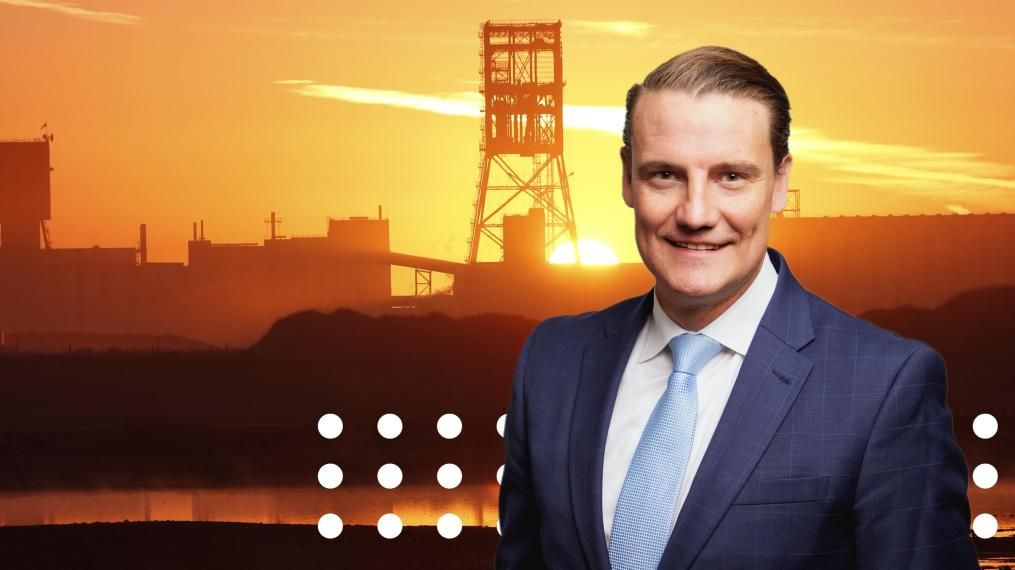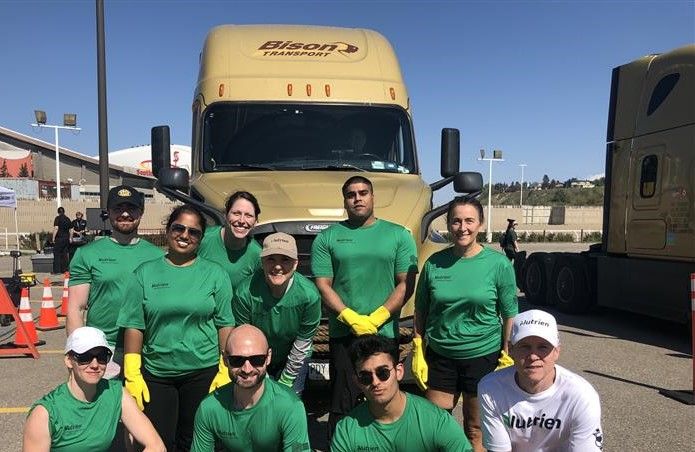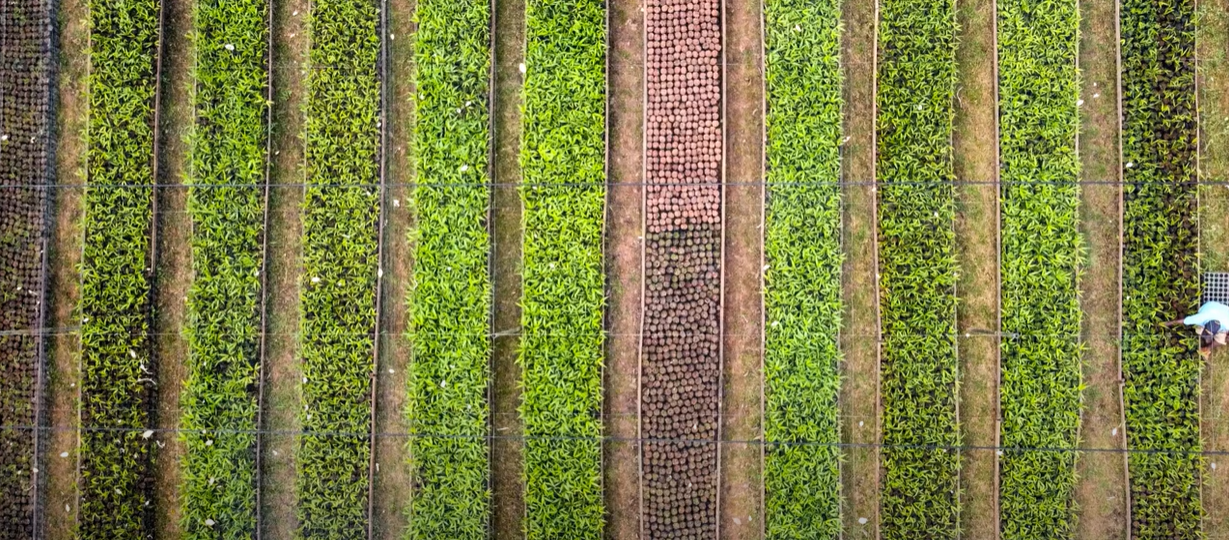
Mining Journal Intelligence interviews Chris Reynolds, EVP & President, Potash
Chris Reynolds, EVP & President of Nutrien’s Potash business unit was recently interviewed by Mining Journal Intelligence for its Global Leadership Report 2023 and discussed topics including industry shifts complicating community relations, successful engagement strategies, industry reputation repair and automation's impact on community relationships – all under the overarching theme of social license.
The interview, provided by Mining Journal Intelligence, is below.
In its 2023 Global Leadership Report, Mining Journal Intelligence focuses on trends and best practices in community relations, or social license to operate – which was identified as one of the industry’s biggest challenges in earlier editions. Key trends under discussion include how societal shifts are complicating community relations efforts and the industry’s response to this increasing complexity, including proven strategies and tools for keeping local residents onside, and spending levels. Other standout themes include how mining’s global reputation is influencing local opinions about the industry, whether community challenges are creating ‘no-go’ zones for mining companies, and how automation will affect the delicate relationship between the industry and communities in the future. Click here for more information about the Global Leadership Report.
Has maintaining a social license to operate become more difficult in recent years- and if so, what has driven this trend?
When you've been producing potash in a province in Canada for close to 60 years, you get fairly good at knowing what works and what doesn't.
I'm sure that Saskatchewan people are the same as people around the world that have strong mining industries in them. They can see pretty quickly if you're not being genuine and authentic in your engagement, and if you're doing something that in their mind is not contributing to the community or adding value.
I'm not just talking about dollars, I'm talking about adding value to their way of life, or if you're polluting and not being a good neighbor. Even before the advent of social media, they would find ways to let you know or let governments and regulators know.
Over 60 years, we've always had this as part of our strategy as a company. Now it has become more difficult in the context that investors are scrutinizing [community relations] metrics a little more closely. There are consultants coming up with all sorts of acronyms that we need to measure and benchmark. We welcome that, and because we've been doing it for so long anyway, now we're just formalizing it. Now investors are more inquisitive and curious, saying, we see your bottom line but what are you doing in the communities in which you operate? Are you adding value apart from the numbers on a balance sheet?
What strategies or tools have been most successful in maintaining good relations with communities?
If I had to drill it down to one strategy that we've found most successful, it's being authentic in engagement.
Companies can throw money at causes and splash their name across brochures and think that's enough, but you have to be authentic. What I mean by that is we would always pair a cash donation with boots-on the-ground participation from our employees.
When we sponsor an event, we encourage our employees to get out and participate, to volunteer at that event, and get to areas and channels where they can listen to what's going on in the community and be genuine participants. When employees volunteer, we provide them with credit for those hours.
So, again, when you pair a philanthropic donation with actual participation by employees out there wearing Nutrien T-shirts and really being part of the community, that's been the most successful strategy for us.
Otherwise, people will be quick to say, thanks very much for your cash donation, but we didn't see you after that. There's an authenticity there that is almost as valuable or maybe more so than the cash donation itself.
Past failings, including deadly environmental disasters and the destruction of sacred sites, have damaged the mining industry's reputation How does this affect your dealings with local communities, and what are you doing to repair the industry’s reputation on a local level?
I don't think we have changed course in light of those events. We have always taken what we do in the community very seriously, how we look after the environment, the communication we have with our neighbors at all mining sites, and genuine on-the ground interaction with those neighbors.
We hold forums in local communities to tell them what we're doing in case we have any major turnarounds that come up, which may increase some sound or steam coming out of the sites to make sure they're aware of what's going on.
We've found that almost over-communicating is the better strategy in engaging those communities.
Have we learned from some of the incidents around the world? Sure, we've looked at them closely and gone back to our own operations and tested ourselves about whether there is anything that could happen to us or is there something we're missing in terms of safeguards, but whether it's the environment or relations with First Nations indigenous communities, we have a strong track record in all of those areas.
There is no finish line. This is something we continue to work hard on every day, and really that's the nature of relationships.
The advent of the internet makes information much more widely available, and we've had questions at community events about, for example, our tailings management areas, and the safeguards we have in place around these areas.
We're always happy to share information about tailings management and what we do to safeguard the environment and our neighbors to make sure they're not impacted.
We've worked very closely with provincial and federal regulators, which closely watch a lot of what we're doing and we're proud that we would exceed those regulations in terms of the safeguards that we put in place. Communities are interested and so we engage in conversations and talk about those safeguards in place.
Looking to the future, many new mines will be needed to meet the demand for critical minerals - but increased automation will reduce onsite jobs for local ls this a recipe for growing community conflicts? How will you approach this challenge?
We've embarked on quite a bit of new technology in all of our mines and this has been through a lens of safety.
That was what really drove a lot of these initiatives that we embarked on over a decade ago, in terms of how we remove individuals from high-risk areas of the mine, and we've done that through remote mining.
As we removed those people from those machines, we took them to a place that was much safer, above ground. We still need someone to operate that mining machine, whether they're sitting on the machine itself 1000m underground or in an air-conditioned office with easy access to restrooms and coffee facilities.
They found it a much more exciting environment than just physically sitting on the machine. As that technology advances it will mean different skills, and we're going to offer retraining to make sure we can still employ those people in the future.
It's been the opposite reaction to what we thought because this technology has enabled more inclusive environments. We’ve got some gaps where we want to continue to make our workforce even more remote than it is today, and by creating work environments that are a little more pleasant we can change the perception of mining.
If you walked over to the University of Saskatchewan and asked, what's your vision of mining? The first thing they would think about wouldn't be sitting in front of a screen toggling a joystick. That's where we have to do a little better as a company, and as an industry, to change the perception of mining. As we look at this trend from fossil fuels to a clean energy future, we as a population, we can't do that. We need more mining of the critical minerals that are needed for that transition, the rare earth minerals, many of which are here in Canada.
We can't make that transition without mining so we're going to need more people to come into the industry and get excited about the career opportunities. This is not going to be a story of reducing employment in our business. We're going to need more people involved. This is a challenge for the mining industry.
Related stories
Explore more about Nutrien

Sudeepta Mohapatra loves the thrill of the chase
In my role I track the global agricultural fundamentals that help in predicting short to long-term trends driving the future direction of the global agriculture industry. I also develop and update various economic models. These models are used to estimate and predict crop input expenditure in our [...]
Read more
Nutrien Releases 2023 Global Community Impact Report
Nutrien’s Community Relations & Investment (CRI) supports our business purpose by nurturing communities through collaborations with community partners who share our values and help us to make a positive and lasting impact in the communities where we operate. “While we share CRI data and stories [...]
Read more
Using DNA analysis to make more resilient crops
Did you know that Nutrien has a Genotyping lab? It’s located in our Canola breeding facility in Saskatoon, Saskatchewan. Employees like Li Tan, Lead, Molecular Biology, work in the lab to analyze DNA for specific genes within plants.
Read more